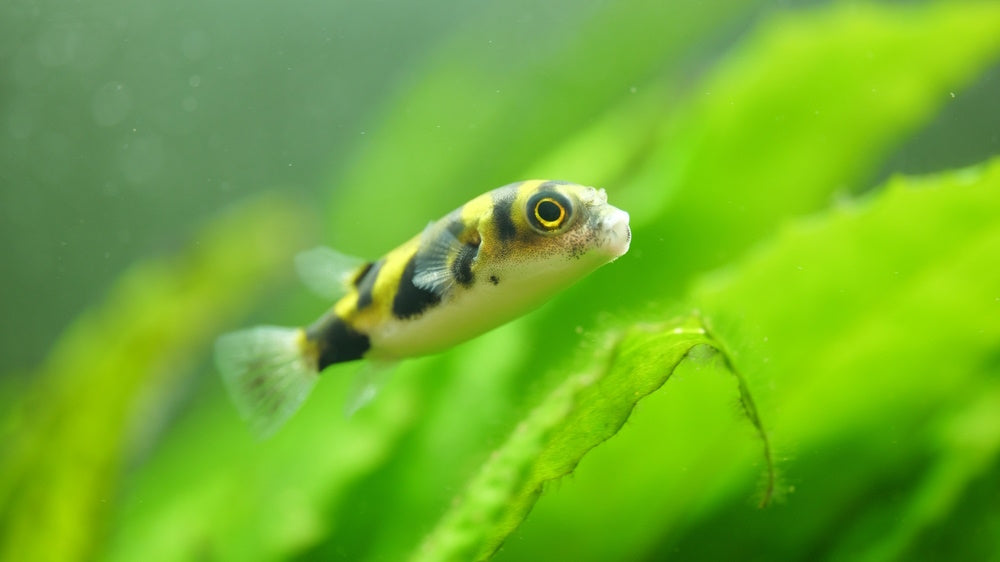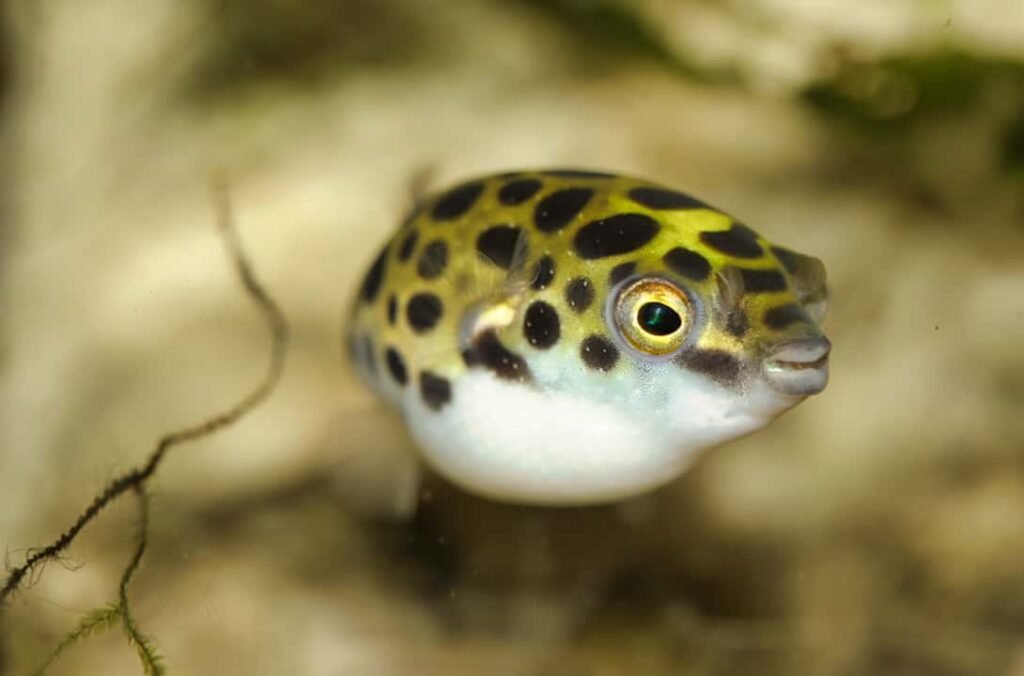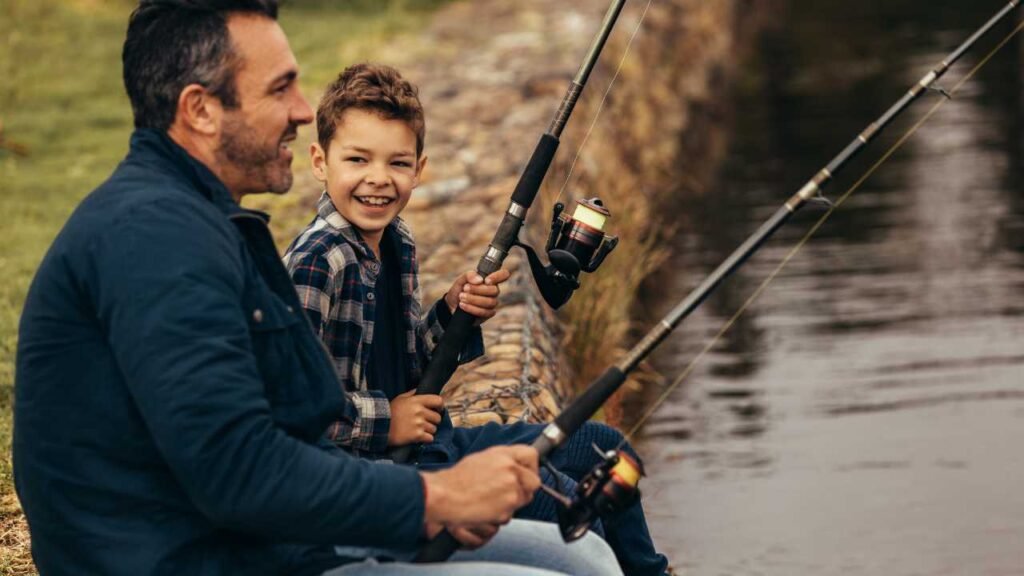Freshwater puffers are fascinating fish. They bring life and character to any aquarium.
For beginners, choosing the right freshwater puffer is important. Puffers have unique needs and personalities. Starting with the best beginner-friendly options can make a big difference. These fish are known for their curious nature and charming looks. They can be a joy to care for, even for those new to fish keeping.
In this blog post, we will explore some top freshwater puffers that are perfect for beginners. You’ll find out why these puffers are easy to care for and what makes them stand out. Dive in to learn which puffer might be the best fit for your aquarium journey.

Credit: www.youtube.com
Introduction To Freshwater Puffers
Freshwater puffers are captivating fish. They add excitement to any aquarium. Known for their playful behavior and unique appearance, they are a popular choice among fish enthusiasts. If you’re new to the hobby, you might wonder if freshwater puffers are a good fit for you.
Why Choose Freshwater Puffers?
Freshwater puffers are fascinating creatures. Their unique personalities make them stand out. Here are some reasons to consider them:
- Engaging Behavior: Puffers are active and curious. They interact with their environment and keep you entertained.
- Distinct Appearance: Their round bodies and expressive eyes are charming.
- Intelligent Pets: Puffers are smart and can recognize their owners. They can even learn to take food from your hand.
Beginner-friendly Species
Not all puffers are suited for beginners. Some require special care. Below are a few species that are easier to manage:
| Species | Size | Tank Requirements |
|---|---|---|
| Dwarf Puffer (Carinotetraodon travancoricus) | 1 inch | 5 gallons per fish |
| Figure 8 Puffer (Tetraodon biocellatus) | 3 inches | 15 gallons per fish |
| South American Puffer (Colomesus asellus) | 3 inches | 20 gallons per fish |
Each of these species has its unique traits. The dwarf puffer is small but full of personality. The figure 8 puffer has striking patterns. The South American puffer is more peaceful and less aggressive.
Choose a species that fits your tank size and care level. Start with one of these beginner-friendly puffers. Enjoy their playful antics and vibrant personalities!
Top Freshwater Puffers For Beginners
Freshwater puffers are fascinating and unique fish. They add charm and excitement to any aquarium. For beginners, choosing the right species is crucial. Here are some of the best freshwater puffers for beginners.
Figure 8 Puffer
The Figure 8 Puffer is a popular choice for beginners. It is known for its striking pattern of dark and light markings. This puffer is relatively small, growing up to 3 inches. It requires brackish water conditions. Here are some key details:
- Size: Up to 3 inches
- Water Type: Brackish
- Diet: Carnivorous, loves snails and frozen food
- Tank Size: Minimum 15 gallons
Figure 8 Puffers are active and curious. They thrive in a well-maintained tank with plenty of hiding spots.
Dwarf Puffer
The Dwarf Puffer is another excellent choice. It is one of the smallest puffers, reaching only 1 inch. This makes it perfect for small tanks. Here are some important points:
- Size: Up to 1 inch
- Water Type: Freshwater
- Diet: Carnivorous, prefers live or frozen food
- Tank Size: Minimum 5 gallons
Dwarf Puffers are known for their playful behavior. They are best kept alone or with other Dwarf Puffers in a well-planted tank.
South American Puffer
The South American Puffer is ideal for beginners. It is peaceful and can be kept in a community tank. This puffer grows up to 4 inches. Here are the essentials:
- Size: Up to 4 inches
- Water Type: Freshwater
- Diet: Carnivorous, enjoys a varied diet
- Tank Size: Minimum 20 gallons
South American Puffers are social and adaptable. They need a tank with hiding places and a sandy substrate.
Choosing the right puffer can make your aquarium experience enjoyable. Each of these puffers offers unique traits and is beginner-friendly.
Setting Up The Perfect Tank
Setting up the perfect tank is crucial for ensuring your freshwater puffer thrives. A well-planned tank setup ensures the health and happiness of your aquatic friend. Below, we will cover the essential aspects of creating an ideal environment for your puffer, including tank size, substrate, and decorations.
Tank Size And Setup
Adequate tank size is vital for your freshwater puffer. Puffers are active and need space to swim. A minimum of 20 gallons is recommended for beginners. Larger tanks are better as they provide more room for the puffer to explore.
Ensure the tank has a secure lid. Puffers are known to jump. Good filtration is also essential. Puffers produce a lot of waste. A strong filter helps maintain clean water. Additionally, install a heater to keep the water temperature stable. Puffers prefer warm water, around 75-80°F.
Substrate And Decorations
The right substrate and decorations can make a big difference. Choose a fine sand substrate. Puffers enjoy digging and burrowing. Avoid sharp or rough substrates. They can injure the puffer’s delicate skin.
Decorations should mimic the puffer’s natural habitat. Use driftwood, rocks, and plants. They provide hiding spots and reduce stress. Ensure decorations are smooth and puffer-safe. Avoid sharp edges. Live plants are a great addition. They help maintain water quality and provide a natural environment. Popular plant choices include Java Fern and Anubias.
Consider adding floating plants as well. They provide shade and a sense of security. Amazon Frogbit is a good option. Make sure to leave plenty of open swimming space. Puffers need room to move freely.

Credit: www.reddit.com
Water Quality And Maintenance
Maintaining the right water quality is crucial for the health of freshwater puffers. Clean, balanced water keeps these fish happy and active. Beginners can easily manage this with a bit of knowledge and regular care.
Ideal Water Parameters
Freshwater puffers thrive in specific water conditions. Here are the ideal parameters:
| Parameter | Ideal Range |
|---|---|
| pH Level | 6.8 – 7.6 |
| Temperature | 74 – 78°F (23 – 26°C) |
| Ammonia | 0 ppm |
| Nitrite | 0 ppm |
| Nitrate | Below 20 ppm |
Regularly test your water to ensure these levels. Using a good water test kit can help you monitor these parameters effectively.
Regular Maintenance Tips
Consistent maintenance is key to keeping your puffer’s environment healthy:
- Weekly Water Changes: Change 20-30% of the water weekly. This helps remove toxins and keep the water fresh.
- Filter Maintenance: Clean the filter monthly. Ensure it is working properly to remove debris and toxins.
- Gravel Cleaning: Use a gravel vacuum to clean the substrate. This removes uneaten food and waste.
- Monitor Fish Behavior: Watch your puffer’s behavior. Sudden changes can indicate water quality issues.
These simple steps ensure a clean, safe environment for your freshwater puffer.
Feeding Your Puffer
Feeding your freshwater puffer fish is a critical aspect of their care. Puffers have specific dietary needs that must be met for them to thrive. Understanding these requirements will help you keep your puffer healthy and happy.
Diet Requirements
Freshwater puffers are carnivores. They need a diet rich in protein. They enjoy eating live and frozen foods. These include bloodworms, brine shrimp, and snails. Snails are especially good because puffers need to wear down their teeth. Overgrown teeth can cause health issues.
Here is a table of common foods for puffers:
| Food Type | Benefits |
|---|---|
| Bloodworms | High in protein |
| Brine Shrimp | Easy to digest |
| Snails | Helps wear down teeth |
Feeding Schedule
Puffers should be fed once or twice a day. Offer food in small amounts. This ensures they eat all their food without overfeeding. Overfeeding can lead to poor water quality.
Follow this simple feeding schedule:
- Morning: Small portion of bloodworms or brine shrimp
- Evening: Small portion of snails or more bloodworms
Always remove uneaten food after feeding. This helps maintain clean water. Clean water is essential for your puffer’s health.

Credit: www.aquariumcoop.com
Health And Disease Prevention
Keeping your freshwater puffer healthy is vital. Healthy pufferfish live longer and are more active. Knowing common health issues and how to prevent them helps beginners a lot.
Common Health Issues
Pufferfish can face several health issues. Here are some common ones:
- Ichthyophthirius multifiliis (Ich) – A parasite causing white spots on the body.
- Bacterial infections – Often show as red streaks or sores.
- Fungal infections – White, cotton-like growths on fins or body.
- Internal parasites – Cause weight loss and poor appetite.
- Fin rot – Decaying fins due to poor water quality.
Preventative Measures
Prevention is better than cure. Here are some steps:
- Maintain Water Quality: Regularly test water parameters. Ideal levels are crucial.
- Healthy Diet: Feed a balanced diet. Avoid overfeeding.
- Quarantine New Fish: Isolate new fish for 2-4 weeks before adding.
- Regular Tank Cleaning: Clean the tank and change water weekly.
- Monitor Behavior: Watch for changes in activity or appetite.
Following these steps ensures your freshwater puffer stays healthy.
Behavior And Compatibility
Understanding the behavior and compatibility of freshwater puffers is crucial. This ensures they thrive in a community tank. Not all puffers are the same. Some are peaceful while others are aggressive. Let’s explore their typical behavior and suitable tank mates.
Typical Behavior
Freshwater puffers are known for their unique personalities. They are intelligent and curious fish. Puffers often interact with their environment. They may even recognize their owners.
These fish can be territorial. They might defend their space against other fish. Some species are more aggressive than others. It’s essential to monitor their behavior closely.
Puffers are also known for their fin-nipping habits. They may bite the fins of other fish. This can cause stress and injury to tank mates. Providing enough space and hiding spots can help reduce aggression.
Tank Mates
Choosing the right tank mates for freshwater puffers is important. Compatibility can vary depending on the puffer species.
- Dwarf Puffers: These are more peaceful and can live with small, non-aggressive fish.
- Figure 8 Puffers: They do well with fast-moving fish that can avoid nipping.
- Green Spotted Puffers: These are best kept alone or with other puffers.
Here is a table of suitable tank mates for different puffer species:
| Puffer Species | Compatible Tank Mates |
|---|---|
| Dwarf Puffer | Neon Tetras, Rasboras, Snails |
| Figure 8 Puffer | Danios, Barbs, Mollies |
| Green Spotted Puffer | Other Green Spotted Puffers |
Always research the specific needs of your puffer species. Monitor their interactions with tank mates. This ensures a peaceful and healthy aquarium environment.
Frequently Asked Questions
What Are The Best Freshwater Puffers For Beginners?
The best freshwater puffers for beginners are the dwarf pea puffer and the figure eight puffer. They are small, easy to care for, and have a friendly temperament.
How Big Do Freshwater Puffers Get?
Most freshwater puffers stay small, typically growing up to 3 inches. However, some species can reach up to 6 inches.
What Do Freshwater Puffers Eat?
Freshwater puffers eat a variety of foods, including snails, bloodworms, and brine shrimp. They prefer live or frozen food.
Are Freshwater Puffers Easy To Care For?
Yes, freshwater puffers are relatively easy to care for. They need a well-maintained tank, proper diet, and regular water changes.
Conclusion
Choosing the best freshwater puffer for beginners can be simple. Consider factors like tank size, diet, and temperament. The right puffer will thrive with proper care and attention. Remember to research and prepare your tank before bringing your puffer home.
This way, you ensure a healthy and happy environment for your new pet. Enjoy the exciting journey of caring for a freshwater puffer. They can be rewarding and delightful additions to your aquarium. Happy fishkeeping!



